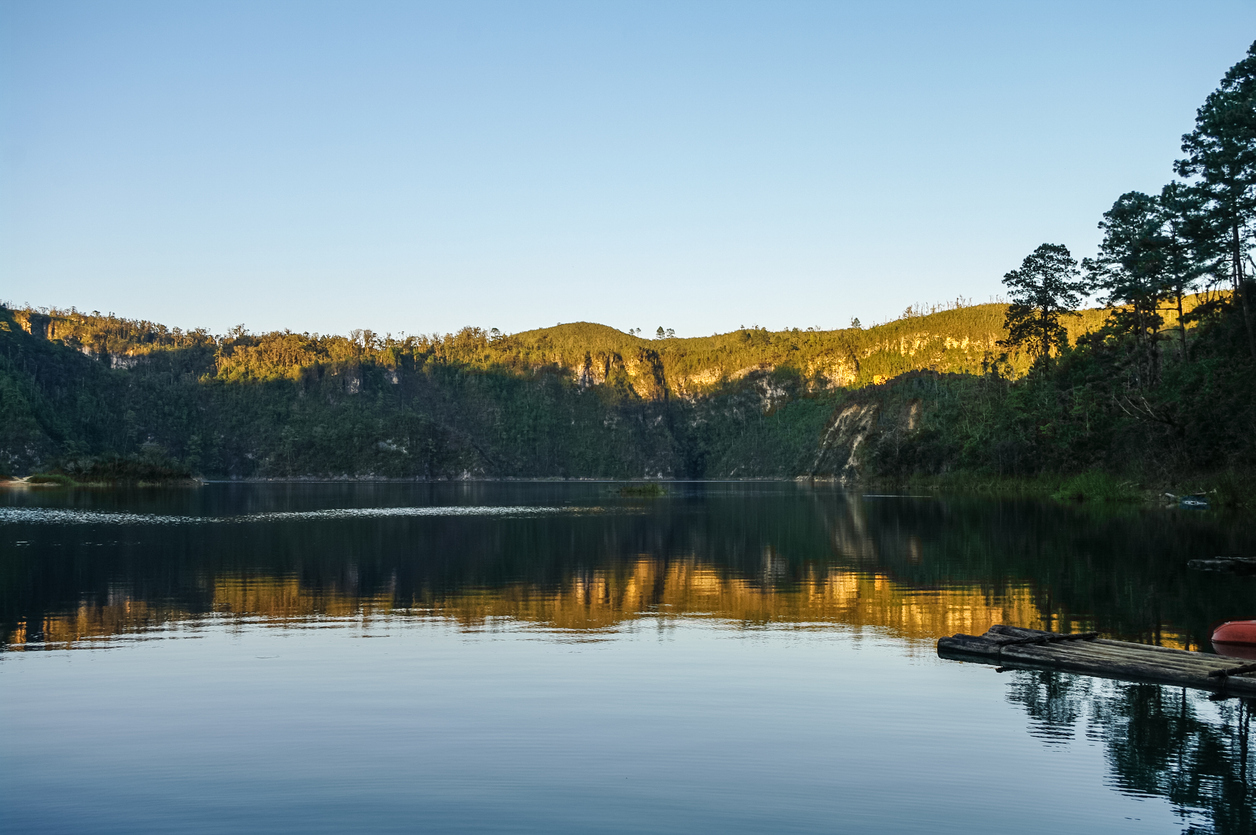
Mexico sees jungle lakes evaporate amid lower rainfall

Some of the mystical blue-green lakes of the Lacandon jungle in southern Mexico are drying up this year, the result of what experts say is an extended drought and rising temperatures in the region.
The Metzabok lake, which normally covers 220 acres, dried up completely this month, leaving cracked mud where the translucent waters normally reflect the surrounding jungle and Lacandon Indians travel by canoe.
About 350 Lacandones, an indigenous group that still uses traditional dress of long hair and white cotton tunics, depend on tourism, fish and water from the lake and 20 other jungle lagoons nearby for their livelihood.
In recent days, they worked with biologists to capture and transfer crocodiles, fish and turtles from the dried-up lake to those nearby that still have water.
Also Read: Brazil’s Bolsonaro authorizes army to help fight Amazon fires
The area is part of a nature preserve known as Naha-Metzabok, and the Lacandones have preserved the surrounding jungle for decades by avoiding the slash-and-burn agriculture and cattle ranching.
Some of the older Lacandones remember that the Metzabok lake (the name means “The god of thunder” in the Maya language) had dried up once before, in the 1950s.
But experts worry that such episodes will become more frequent as rainfall declines and peak temperatures rise in the area, located just a few dozen miles from the Guatemalan border.
Mexico’s National Water Commission lists most of the Lacandon jungle as being in a “moderate drought” situation, but some areas whose waters normally feed the lagoons are listed as “severe to extreme” drought. Since the jungle lakes are fed by groundwater flows, not rivers, the situation may take some time to recover.
But it is not just Metzabok lake that has suffered.
Adrián Méndez Barrera, a biologist who serves are regional director for Mexico’s National Commission for Protected Nature Areas, said that he knows of six lagoons outside the nature reserve that have dried up.
Also Read: Ebola outbreak in Congo declared a global health emergency
“Rainfall over the last four years has been down by about 30 per cent,” Méndez Barrera said. “On the other hand, we have seen average maximum temperatures rise from 30 degrees to 34 degrees. These two factors have a combined effect.”
“The lakes are not very deep,” he noted, “and we are seeing a high level of evaporation.”
The better-known Lagunas de Montebello lakes are also suffering; the main lake in that area also located in southern Chiapas state is 60 meters below its average high-water mark this year.
“I dont know if the lakes are going to recover, or if this (drought) is going to become a more frequent and more widely-seen experience,” Méndez Barrera said.

